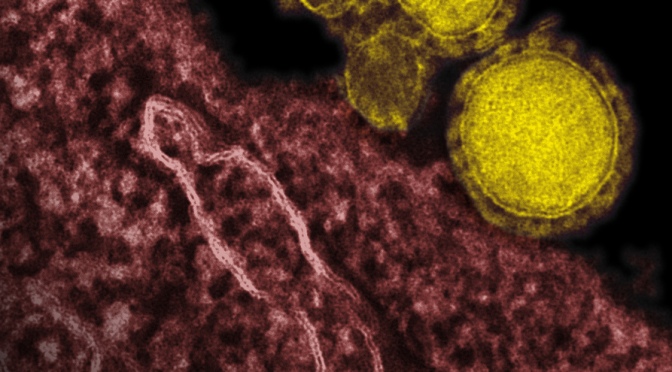
- Colorized transmission electron micrograph of the Middle East respiratory syndrome coronavirus (Credit: NIAID via Flickr used under CC license)
In 2002 the first cases of a strange new flu-like illness began appearing in southern China. As case numbers mounted well into 2003, it became clear that this was not the flu. Patients began dying as their lungs filled with fluid and stopped functioning. Researchers rushed to determine what kind of virus was causing this disease before it could spread past hope of containment.
After the hard work of many dedicated individuals, it was determined that this new lethal virus was in fact a coronavirus (later named Sever Acute Respratory Syndrom virus, or SARS-CoV). This was odd, as this kind of virus was not known to cause serious disease in humans before this point. By comparing this new virus to older samples, it was determined that this virus was originally living in bats before jumping to civets, and then finally humans. Thankfully, due to this varied zoonotic background (which means to come from animals), SARS did not have the best person-to-person transmissibility during the early parts of the outbreak and was eventually contained once health care officials new what to look for and quarantine. Once the numbers were tallied it was determined that SARS infected over 8000 people, killing over 700 of the most unfortunate individuals. This would not be the last time a coronaviruses would make a dramatic jump into human hosts. In 2012 we were tested on what we learned during the first SARS outbreak in 2002. Continue reading The decade of the Coronavirus: What SARS and MERS have taught us about containing potential pandemics

